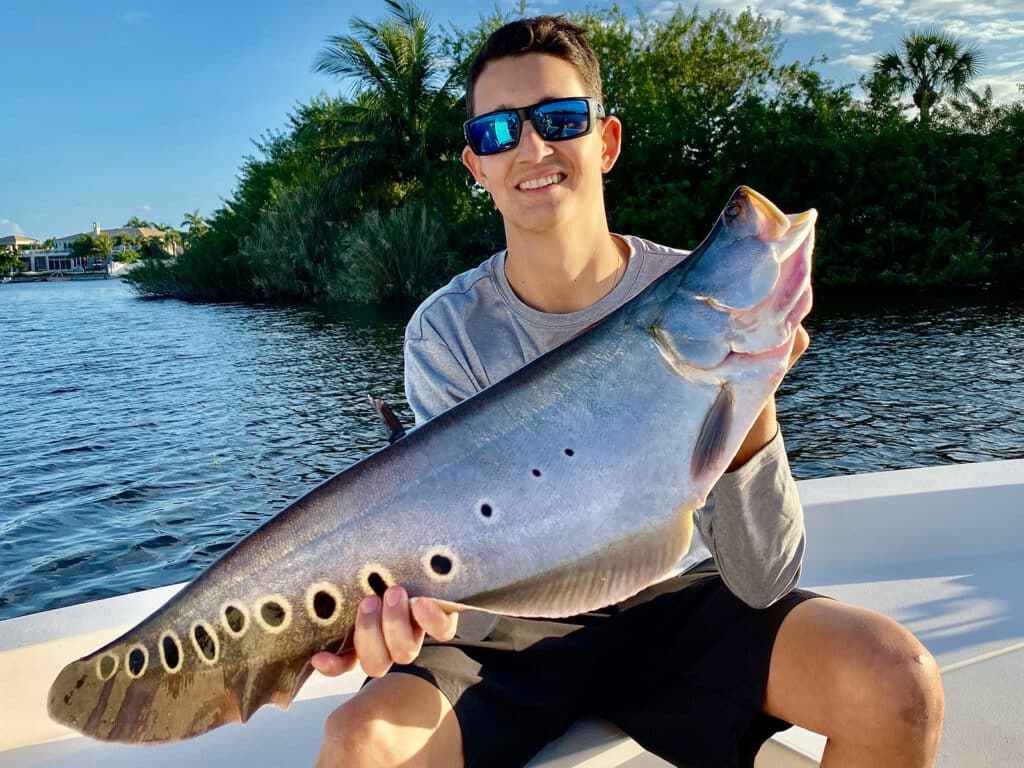
Like alien invaders in H.G. Well’s sci-fi novel The War of the Worlds, unwelcome invasive fish and transplanted exotics have landed in our local waterways. Unlike our reaction to Well’s three-legged Martians, earthlings welcome alien fish with open arms and sharp hooks. If you’re looking for a challenge, check out these five freshwater invasives.
An invasive fish species is defined as a fish that’s been introduced beyond its native range and is causing harm, or has the potential to cause harm, in its new waters. Check your local fishing regulations to find out what actions you should take after you’ve caught an invasive species. It’s possible you’re supposed to keep it, to report it, to kill it, or even to release it back into the waters where you caught it. No matter what, there’s little harm in fishing for invasives, but plenty of benefits.
Florida’s Peacock Bass

South Florida’s warm water and plentiful sunshine are perfect for tropical invasives such as peacock bass from South America, cichlids from Africa, and clown knifefish from Asia.
Capt. Johnny Stabile, at South Florida Fishing Charters says, “Peacocks are just like largemouth — find them near structure.” Stabile looks for rock pinnacles and boat docks to find peacock bass.
To load up on bait, Stabile first catches threadfin shad and shiners with a 10-foot cast net. To fish the live bait, he uses a lightweight, medium-action rod and 2500-reel spooled with 10-pound braid and 15-pound fluorocarbon leader. He snells a No. 1 octopus-style hook to the leader and runs the hook through the roof of the bait’s mouth.
To work the structure, Stabile makes a long cast and slowly swims the live bait back to the boat. “If the bait is within 10 feet of a peacock bass, the fish will attack.”
Stabile also uses small crankbaits and jerkbaits to target peacock bass. He recently found a new favorite, the Shimano Macbeth 39. “The tiny square-bill crankbait gets bit!” he says.
Carp Fishing on Fly
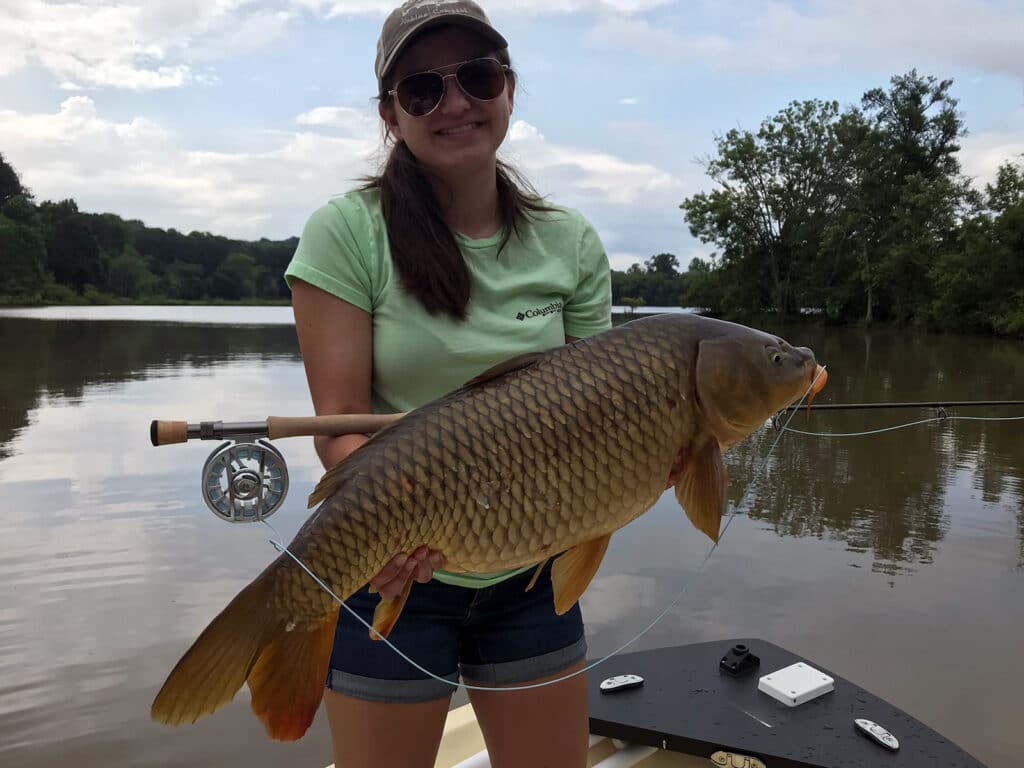
For fly fishing anglers, one of the ultimate experiences is tracking a bonefish across an emerald water flat. For fly fishing guide Henry Cowen, chasing common carp in the Chattahoochee River is the next best thing. “I’m a few miles from Atlanta, and yet I’m still poling a skiff around flats like they do in the Everglades or Keys,” he says.
Cowen recommends a 7-weight rod, floating line, 10-foot fluorocarbon leader and 10-pound-test tippet. For a fly, he uses a beadhead woolly bugger, Clouser swimming nymph or carp hybrid fly in brown, rust, black or olive. “Carp like a little pink or orange in the fly too,” he adds.
Chattahoochee River carp are feeding machines, but Cowen says they are spooky. “The fly has to land next to the carp’s mouth,” he says.
Common carp are native to Europe and Asia. The invasive species was introduced to the US intentionally, with hopes that it would catch on as a food fish and sportfish. But it never gained a strong following, even as it spread across the nation’s waterways.
Mid-Atlantic Snakeheads
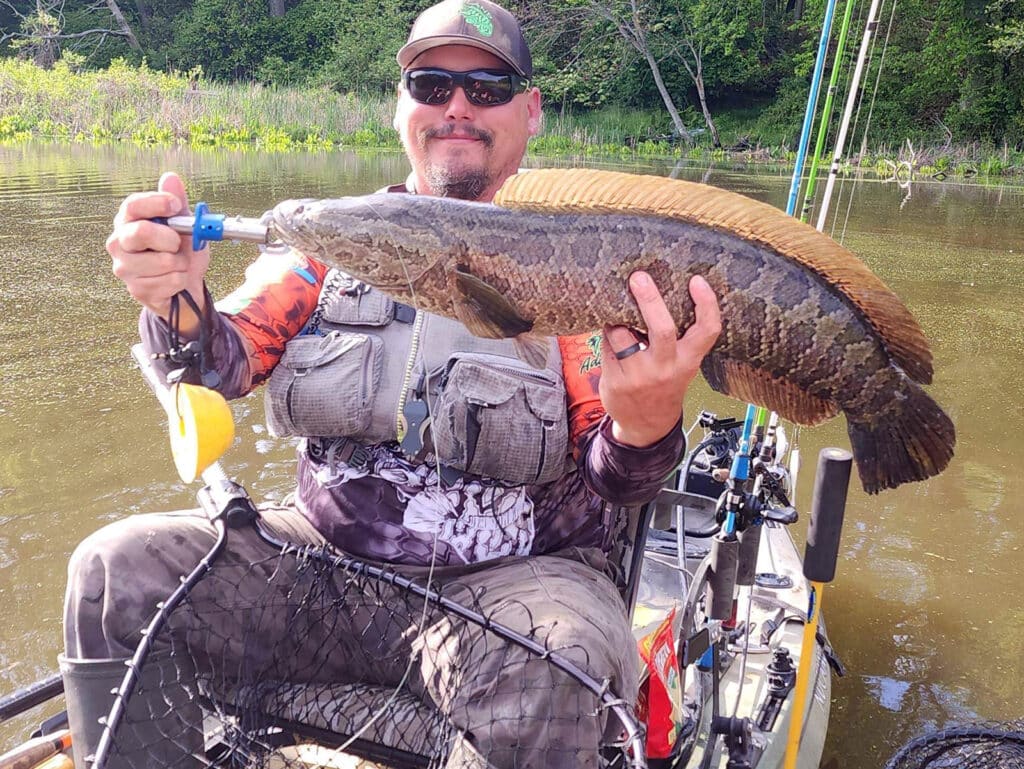
Snakehead are the poster child for invasive species. Their appearance in the mid-Atlantic was first met with horror and now anglers and foodies love the asian alien.
Damien Cook, at Lowland Outfitters on Maryland’s Eastern Shore, searches the backwater creeks with chatterbaits, swimming frogs and paddle tails. In summer, he looks for fry balls guarded by overly protective snakehead parents.
When it comes to rigging, Cook warns, “Prepare for a brutal attack.” He uses a 7-foot baitcasting rod and 200-size reel spooled with 30-pound braid tied directly to the lure.
The snakehead endgame is a fight to the death. Cook recommends using a deep net to land the snakehead. “Then I hit the fish with a steel pipe,” he says.
Blue Catfish in Unconventional Places
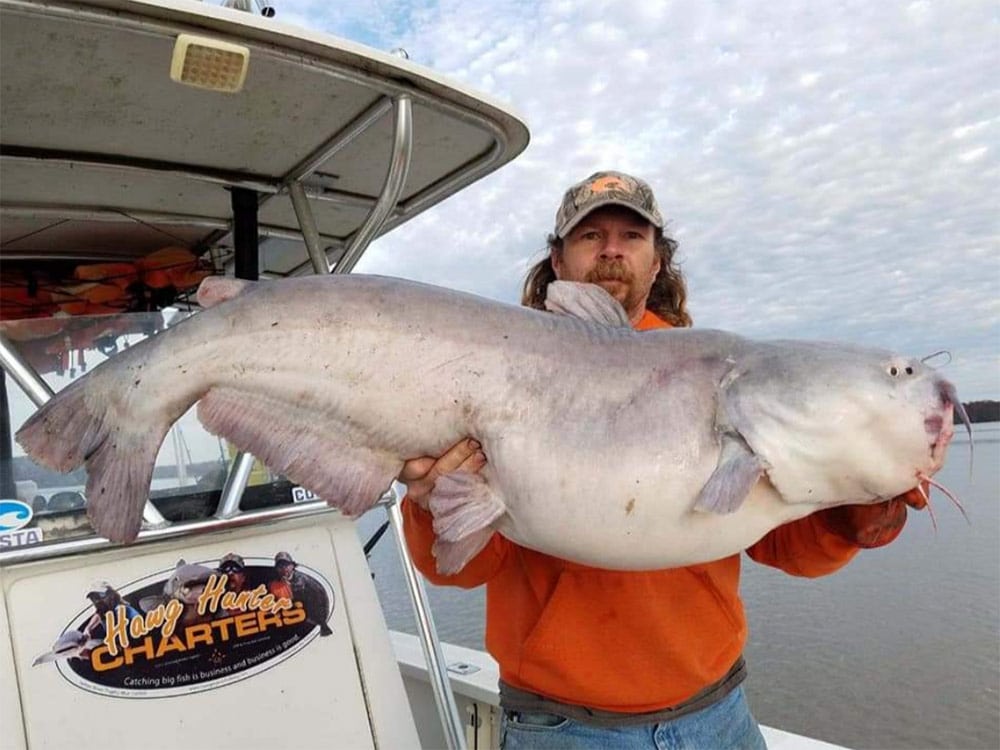
In the 1970s, Mississippi blue catfish were introduced into Virginia’s James River as a target for commercial and recreational anglers. The results have exceeded expectations.
In the dead of winter, Capt. Hunter Tucker, of Hawg Hunter Fishing, turns his attention to giant catfish weighing up to 80 pounds. “Around here they’re the biggest thing going,” he says.
He starts the day catching gizzard shad with a gillnet. Then, he baits a chunk of shad on a 10/0 Owner circle hook and fish-finder rig with an eight- to 16-ounce sinker.
He anchors his boat and fishes structure like depth changes and brush piles. “On a cold day, look for the fish moving onto shallow flats as the sun comes up,” Tucker says.
Throw Another Barramundi on the Barbie
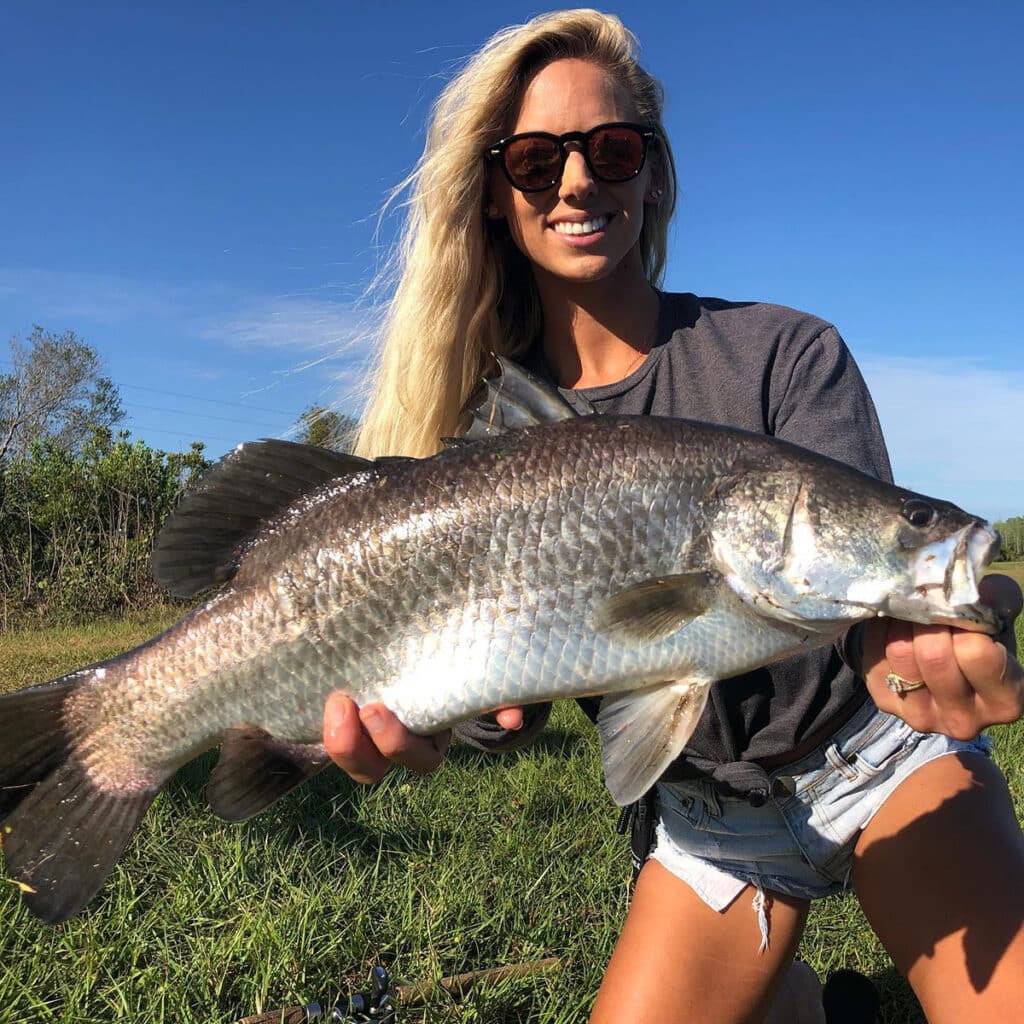
Barramundi are native to Australia but a small population found its way to central Florida. Originally started as a barramundi fish farm, Osceola Outback Adventures added sport fishing to the menu when word got out about the fish’s fight. Owner Byron Hennecy says, “They are the hardest fighting fish I’ve ever caught.”
To catch barramundi, Hennecy recommends a 7½-foot rod and 2500-size reel spooled with 30-pound braided line and 50-pound monofilament leader. “The fish have sharp gill plates, like a snook, so re-tie after a couple fish,” Hennecy recommends.
Barramundi lures include D.O.A. CAL shads, Z-Man Mag Swimz, Stanley Jigs Top Toad, and the Whopper Plopper. Hennecy says the fish are popular with fly fishing anglers using Clousers minnows, crab and shrimp imitations.
Even though the fish are captive in a 3-acre pond, Hennesy says they are a blast to catch. “Barramundi hit like a freight train, run hard, and jump out of the water.” That sounds like freshwater tarpon fishing!








